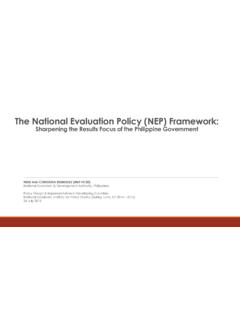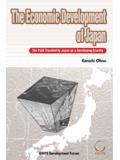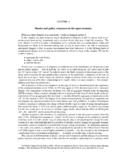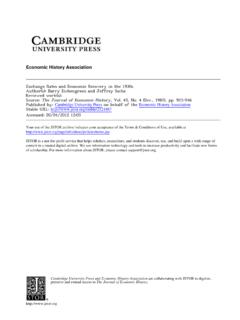Transcription of Monetary Policy and the Real Economy: A …
1 GRIPS Discussion Paper 13-13. Monetary Policy and the Real economy : a structural var approach for sri Lanka Thanabalasingam Vinayagathasan July 2013. National Graduate Institute for Policy Studies 7-22-1 Roppongi, Minato-ku, Tokyo, Japan 106-8677. Monetary Policy and the Real economy : a structural var approach for sri Lanka Thanabalasingam Vinayagathasan*. National Graduate Institute for Policy Studies (GRIPS). July, 2013. Abstract This paper attempts to identify the Monetary Policy indicator that better explains the Sri Lankan Monetary Policy transmission mechanism. This study also estimates how shocks stemming from foreign Monetary Policy and/or oil price affect domestic macroeconomic variables. To that end, we use a seven variable structural VAR model by utilizing monthly time series data from Sri Lanka covering the period from January 1978 to December 2011.
2 Impulse response functions and variance decompositions are used to describe the relationships among variables. Our empirical findings suggest that the interest rate shocks play a significant and better role in explaining the movement of economic variables than Monetary aggregate shocks or exchange rate shocks. Second, the targeting of reserve money is a better strategy for the Sri Lankan economy than a focus on narrow or broad money. Third, our findings clearly show that foreign Monetary Policy shocks and oil price shocks do not seem to affect the domestic economy . Finally, the inclusion of oil price in the SVAR model helped us overcome the puzzles that often appear in the existing literature in Monetary economics. Keywords: Impulse responses, Monetary Policy , Small Open economy , structural VAR. Models JEL Classification: C32, E52, E58, F41.
3 *. I am deeply indebted to Roberto Leon-Gonzalez for his excellence guidance and would like to thank Tetsushi Sonobe, Shinsuke Ikeda, Julen Esteban-Pretel and Kazuhiko Kakamu for their valuable comments and suggestions. All errors in this study are my own. email: 1 Introduction Monetary Policy is broadly used by central banks as a stabilization Policy toolkit in guiding their respective economies, to achieve sustained and high output growth rates and maintain low inflation rates. The effectiveness of Monetary Policy relies on the Policy -makers' ability to make accurate assessments of the effects of Monetary Policy on price stability and economic activities, as well as those of the timing of Policy implementation. The existing Monetary literature addresses many questions regarding the relationship between macroeconomic variables and Monetary Policy .
4 Since the seminal work of Sims (1980), the VAR model has been broadly used by researchers to answer these questions. However, there is no consensus among scholars with regard to the effect of Monetary Policy shock on macroeconomic variables. The vast body of empirical literature, much of which investigates the Monetary Policy transmission mechanism by using VAR analyses of open and closed economies, has identified several empirical anomalies. Typically, such puzzles consist of price puzzles where the price level increases rather than decreases following interest rate (IR) innovations ( , Sims, 1992). Second, there are liquidity puzzles where the nominal IR increases rather than decreases following Monetary aggregate shock ( , Leeper and Gordon, 1991). Third, there are exchange rate (ER) puzzles where domestic currency depreciates relative to the dollar, rather than appreciates, followed by a positive IR shock (see Sims, 1992; Grilli and Roubini, 1995).
5 Finally, there are forward discount bias puzzles where positive interest differentials on domestic assets are associated with persistent appreciations of the domestic currency (Kim and Roubini, 2000 p. 562). Sims (1992) demonstrates that IR innovations partly reflect inflationary pressures, which cause an increase in the price level. Therefore, some of the past empirical studies that take a VAR approach include inflationary expectation as a proxy variable ( , Gorden and Leeper, 1994; Christiano et al., 1996; Sims and Zha, 1998) to explain the price puzzles. Sims and Zha suggest a SVAR model with contemporaneous restrictions, which includes proxy variables for expected inflation. Grilli and Roubini (1995) include moments in long-term interest rates to solve the ER puzzle. Kim and Roubini (2000) suggest the world oil price (WOP) as a proxy for expected inflation, to surmount the problems of price puzzles and endogeneity; some 1.
6 Economists, however, include measures of commodity price in their information sets to sidestep the price puzzle ( , Christiano et al., 1996). For this reason, many empirical studies have extended the closed economy benchmark VAR model ( , Bernanke and Blinder, 1992; Bagliano and Favero, 1998; Bernanke and Mihov, 1998; Amarasekara, 2009) so as to make it an open economy model ( , Eichenbaum and Evans, 1995; Cushman and Zha, 1997; Kim and Roubini, 2000; Kim, 2003; Fung, 2002;. Raghavan et al., 2009; Mishra and Mishra, 2010). Such an extension with the VAR approach typically involves the addition of some foreign variables, such as WOP index, foreign IR, and movement of ER. Economists do not agree on what is the best Monetary Policy indicator. Some researchers propose the IR as the best Policy tool ( , McCallum, 1983; Bernanke and Blinder, 1992).
7 However, Gordon and Leeper (1994) challenged this argument and find that the federal funds rate (FFR), as well as Monetary aggregates, generate some dynamic responses. In contrast, among many others, Strongin (1995), Eichenbaum and Evans (1995), and Eichenbaum (1992). suggest that shocks to Monetary Policy with nonborrowed reserves may serve as a good proxy in describing changes in Monetary Policy . Moreover, Sims (1992) suggests the short-term IR, while Bagliano and Favero (1998) recommend the long-term interest rate as a good indicator in expressing change in Monetary Policy . Other groups of literature suggest that the exchange rate plays an important role in describing the Monetary Policy transmission mechanism ( , Cushman and Zha, 1997; Fung, 2002). There has been an increasing number of studies that focus mainly on the transmission mechanism of Monetary Policy , within the contexts of the United States, the non-United States G7 countries, and the Eurozone area.
8 With this in mind, recently, many researchers have applied a similar technique to analyses of their own countries. However, quantitative assessments of the effect of Monetary Policy shocks on macroeconomic variables in a Sri Lankan context are limited and otherwise inadequate. Existing studies of the Sri Lankan Monetary Policy transmission mechanism include only domestic Monetary Policy and macroeconomic nonpolicy variables (see, Amarasekara, 2009) in their VAR approach . However, Cushman and Zha (1997) note that a small open economy is likely to be quite sensitive to a variety of foreign variables (p. 435); with this in mind, we include in our model 2. set-up the FFR as well as the WOP index, to isolate any exogenous change in Monetary Policy . In this way, our study differs from past empirical studies that investigate the transmission mechanism of Sri Lankan Monetary Policy .
9 A review of past empirical works reveals that no study has examined the effect of foreign and domestic Monetary Policy shocks on macroeconomic variables, while using a SVAR. framework and examining the Sri Lankan context. This study seeks to answer the following research questions: (i) Which Policy instrument plays a significant role in explaining movement in the economic activities of Sri Lanka? (ii) Do foreign Monetary Policy shocks . defined as FFR shocks affect the domestic variables? and (iii) Does the inclusion of oil price resolve the problem of price puzzles, and how much do variations in oil price account for output and price fluctuations? Empirical studies that use various Policy variables have obtained inconsistent results. Walsh (2003) illustrates that the exact manner in which Policy is measured makes a difference, and using incorrect measures of Monetary Policy can significantly affect the empirical estimate one obtains (p.)
10 40). This motivated us to investigate the transmission mechanism of Sri Lankan Monetary Policy . Another motivation of this study is that there are no clear relationships among the key economic indicators of Sri Lanka (see Figure 1). In some periods, economic indicators move as expected in response to the use of Monetary Policy tools, while in other periods they move in directions that run counter to those suggested by standard theory. This motivated us to investigate the impulse responses of key macroeconomic variables in response to Monetary Policy shock. By examining monthly data from January 1978 to December 2011, this study found that output decreased significantly and domestic currency appreciated, following contractionary IR. shocks. Second, it found that shocks to Monetary aggregate tend to reduce the IR over some time horizon.















